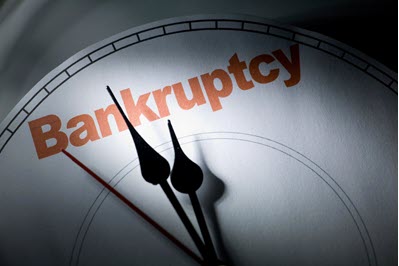|
| |
 |
| |
| |
|
Leveraging Bankruptcy statutes |
| |
| Most people think that bankruptcy is the end of their finances, but the reality is that it is the beginning of a new financial picture keeping assets you wish to keep. Bankruptcy can be a complex topic with different types of filings and strategies to help debtors retain assets or obtain relief from creditors. Below is an overview of the main types of bankruptcy filings in the United States and how debtors can potentially benefit from them: |
| |
- Chapter 7 Bankruptcy (Liquidation):
|
- Purpose: Chapter 7 bankruptcy, often referred to as "liquidation bankruptcy", is designed to discharge most unsecured debts (suich as credit card debt and medical bills) and provide a fresh financial start.
- Asset Retention: Debtors may be able to retain certain essential assets exempt from liquidation (varies by state).
- Benefits:
- Quick debt discharge (usually within a few months).
- Protection from creditor harassment through an automatic stay.
- Potential retention of essential assets like a primary residence, vehicle, and personal belongings, depending on state exemptions.
|
| |
- Chapter 13 Bankruptcy (Reorganization):
|
- Purpose: Chapter 13 bankruptcy allows debtors with regular income to create a manageable repayment plan to catch up on missed payments while retaining their assets.
- Asset Retention: Debtors typically retain all of their assets under a court approved repayment plan.
- Benefits: Prevents foreclosure and repossession by restructuring mortgage and car loan arrears.
- Protects co-signers from creditor collection.
- Allows debtors to catch up on secured debts (i.e. mortgage or car loan and retain their homes and vehicles.
- Provides an opportunity to reduce unsecured debt throuth the repayment plan.
|
 |
| |
- Chapter 11 Bankruptcy (Business Reorganization):
|
- Purpose: Chapter 11 Bankruptcy primarily applies to businesses but can also be used by individuals with substantial debts who don't qualify for Chapter 13.
- Asset Retention: Debtors continue to operate their businesses and maintain ownership while creating a plan to repay creditors.
- Benefits:
- Allows businesses to continue operations and potentially return to profitability.
- Profides a framework for restructuring debts and obligations.
- Can involve the sale of assets to repay creditors, but the debtor retains control over the process.
|
| |
- Chapter 12 Bankruptcy (Family Farmer or Fisherman):
|
- Purpose: Chapter 12 is designed specifically for family farmers and fishermen facing financial difficulties.
- Asset Retention: Debtors retain their farming or fishing operations while developing a plan to repay creditors.
- Benefits:
- Allows family farmers and fishermen to restructure their debts and continue their livelihoods.
- Provides seasonal income flexibility for repayment.
|
| |
- Bankruptcy Strategies for Asset Retention:
|
- Exemptions: Debtors can use state or federal bankruptcy exemptions to protect specific assest from liquidation.
- Repayment Plans: Chapter 13 and Chapter 11 bankruptcies allow debrtors to propose manageable repayment plans to catch up on secured debts while keeping their assets.
- Avoidance Actions: In some cases debtors can use bankruptcy to challence certain creditor actions, such as preference payments or fraudulent transfers to protect their assets.
|
 |
| |
| It is important to note that bankruptcy should be considered as a last resort after exploring alternative debt relief options, such as credit counseling, debt consolidation, or negotiation with creditors. Bankruptcy has long-term financial and credit consequences, so individuals should seek legal advice from a bankruptcy attorney to determine the best course of action based on their unique circumstances. |
|
|
|
|
|
|
 NJLegalGroup - 2023 NJLegalGroup - 2023 |
|
|
|
|



 NJLegalGroup - 2023
NJLegalGroup - 2023